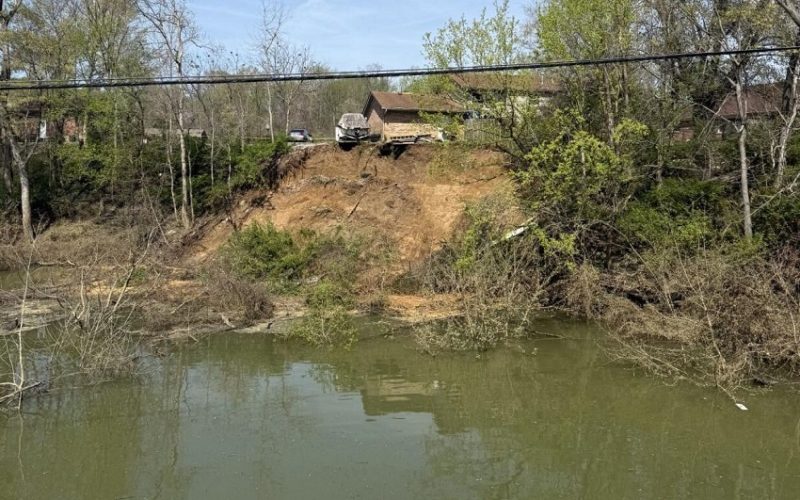LOUISVILLE, Ky. – Recent flooding in Kentucky and southern Indiana has left homeowners and business owners grappling with extensive damage and a costly cleanup process. As residents begin to pump water from basements and repair water-logged properties, many are discovering too late that their homeowners insurance policies do not cover flood damage.
The persistent rainfall that drenched the region earlier this month was unusual, but flooding along the Ohio River and its tributaries is not uncommon. Despite the recurring threat, fewer than 1% of residents in Kentucky, West Virginia, and Tennessee carry flood insurance, according to industry data.
Trevor Burgess, CEO of Neptune Flood, a private flood insurance provider, said widespread confusion continues to leave homeowners financially vulnerable.
“A lot of that is just because of confusion,” Burgess said. “When flooding happens, just even a couple of inches of water in your house can be extremely expensive. Tens of thousands, even hundreds of thousands of dollars of damage can take place.”
Several homes in the affected areas reportedly took on multiple feet of water. For those living in high-risk zones designated by the Federal Emergency Management Agency (FEMA), flood insurance is mandatory if the homeowner has a federally backed mortgage. However, compliance remains low, particularly among those outside of formally designated floodplains who still face significant risk.
In response to the widespread flooding, President Donald Trump issued an emergency declaration for Kentucky, enabling FEMA and other federal agencies, including the Department of Defense, to deploy resources and assist in relief efforts. FEMA is working to provide equipment and funding to support local and state response initiatives.
Burgess advised flood victims to carefully document their losses and expenses. “There are programs through FEMA that you can get reimbursed for some small amounts, so pay attention to that,” he said. “If you have flood insurance, be sure to file a claim. Work with the adjuster, and you’ll get reimbursed.”
A recent study by Neptune Flood found that 95% of the homes damaged during the 2022 floods in eastern Kentucky were uninsured. Meanwhile, enrollment in the National Flood Insurance Program (NFIP) has declined by 17% between 2021 and 2024.
“With so few insured, it’s going to be, unfortunately, a lot of heartache until we can help turn that around,” Burgess said.
As climate events grow more frequent and intense, officials and insurance experts alike warn that the gap in flood coverage could leave even more homeowners exposed to devastating financial losses in the future.











